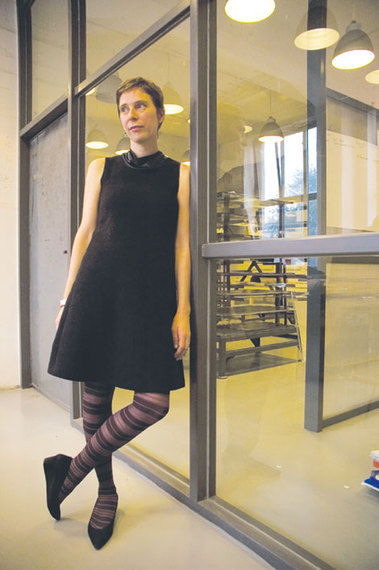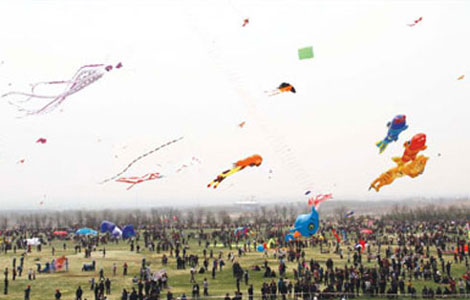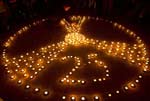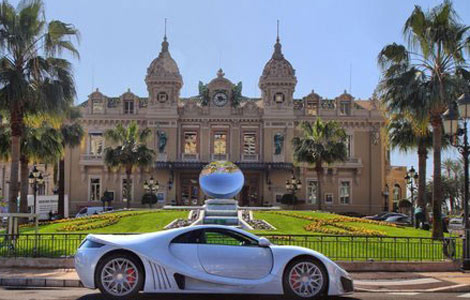Image maker
Updated: 2011-04-22 11:23
By Patrick Whiteley (China Daily European Weekly)
 |
|
Berenice Angremy and friends helped save Beijing's famous 798 |
French art curator helps organize one of China's biggest photography events
Over the past month, Berenice Angremy has been busier than a Beijing bricklayer, putting the finishing touches on one of China's biggest international photography festival. PhotoSpring involves 20 galleries and more than 200 artists from around the world. The exhibits, public discussions and symposiums are bringing in curators and critics from 100 countries to discuss photography.
Last year, Angremy together with another Chinese art company, established an international partnership with the Arles Photography Festival - a well-recognized French event - to stage a similar show in China.
It was first time in 40 years that the French organizers allowed their prestigious exhibition to be displayed outside their country.
PhotoSpring, the Chinese version of the event, bloomed in Beijing in 2010 and the second edition occurs on April 23. It promises to be bigger and better than before.
Angremy says photography is already a powerful medium in China but artists lacked a platform to engage with peers.
"Photography is big in China but until now there was no festival in Beijing and that was quite a pity," she says. "We wanted a festival to let China's young photographers display their best work to an international audience."
One of the special exhibitions on show will be a collection of pictures taken by Chinese photographers that were shown at the Arles festival in France in 1988.
It was one of the first times that Chinese photographers had shown their work in France.
Away from organizing festivals and major art exhibitions, Angremy sometimes dreams of being transported back in time and living the life of a painter in ancient China.
"You would be living in such a natural environment, reading the poems and drinking wine with friends and looking at the moon," she sighs. "It was such an idealistic life."
Ever since she was an art history college student taking Chinese lessons in Paris, Chinese art has been a passion, which led her to Taiwan, where she did her PhD in ancient Chinese painting.
"At first glance these old paintings seem the same, but when you start to enter into this world, each painting is very different," she says.
With such specialized qualifications, Angremy could have followed an academic career teaching ancient Chinese art at any of Europe's top universities or museums.
But instead, she leapt back into the exciting Chinese art world of the 21st century, and moved to Beijing, setting up an art consulting business in what would soon become one of the nation's hottest art districts.
In 2003, she established Thinking Hands, which organizes cultural events and makes contact between Chinese artists and foreign partners.
But at this time, the future of her new office location at Dashanzi, or the 798 district, did not seem promising. The industrial area was scheduled to be demolished.
Thanks to Angremy and a group of committed Chinese artists, the district was saved, and now 798 has become a thriving international art hub, with more than 200 galleries. Artists and dealers from all over the world operate about 50 of these galleries.
The area has really taken off over the past decade but in 2002, the district only had one gallery along with a community of artists who lived there. At the time, no one had envisaged what the area would become.
By 2003, when Angremy set up Thinking Hands, the number of galleries had grown to seven, but the following year, demolition plans were announced.
To fight off the bulldozers, Angremy and friends decided to hold an international festival to highlight the area's potential and to show the Beijing community that the capital needed a dedicated art district
"The purpose of the Dashanzi International Art Festival was to set up an international art platform to showcase Chinese contemporary art and to save the 798 art district," she says.
The one-month festival featured film screenings, performances, workshops, dance and theater. The organizers also published a book to raise awareness to wider audience as well as inform the major players both from the art and the political world.
The mission was a success, and 798 was saved at an auspicious time when China's rising contemporary art scene experienced unprecedented growth, making previously unknown artists famous overnight.
In 2004, Sotherby's reported contemporary Chinese art sales of $3 million. In 2007, at the peak of art boom, more than $194 million worth of art works were sold in Sotherby's auction rooms.
But by 2009, during the economic crisis, the art bubble burst, and the industry underwent a correction, that Angremy says, had to have.
Over the past two years, 798 has still become a popular Beijing tourist destination, with more cafes, bars, restaurants and souvenir shops mushrooming everywhere.
The eateries are often more profitable than the art galleries.
Some artists are critical of the transformation saying that the focus has moved away from the art but Angremy is pragmatic.
"We didn't expect this but in a way it was inevitable, it just transformed by itself, and why not? It's not so bad," she says.
"This whole district was going to be demolished and it was saved and now it has developed into a great art scene, which has really helped Chinese contemporary art and has become so famous and important."
Despite rapid development, the Chinese contemporary art scene is still relatively young, with only a short history of 40 years. Over-commercialization, and the appearance of low-level galleries is not a major worry, says Angremy, and the new generation working in China's art industry are developing their own style. "This generation is so money focused and money is everything, and it's not about contemporary art, it's all about doing business," she says. "A while ago, opening an art gallery was the same as opening a shoe shop.
"But over the years the art scene has matured, and I think it has become a little more mature than Europe.
"Here, people are fast at making connections, are willing to take risks, and are not so conservative as in Europe."
After living in France, the US and Canada, Angremy has no plans to leave Beijing, where she feels at home.
She says the city, like the 798 art district, has changed a lot, but she still enjoys the constant surprises Beijing continually throws in her direction.
E-paper

Blowing in the wind
High-Flyers from around the world recently traveled to home of the kite for a very special event.
Preview of the coming issue
Reaching out
Fast growth fuels rise in super rich
Specials

25 years after Chernobyl
Belarus, Ukraine and Russia will mark the 25th anniversary of the nuclear reactor explosion in Chernobyl.

Luxury car show
The world's most prestigious luxury, sports cars and supercars are displayed in Monaco.

Peking Opera revival
Traditional opera is enjoying a revival in Beijing thanks to some modern touches.
